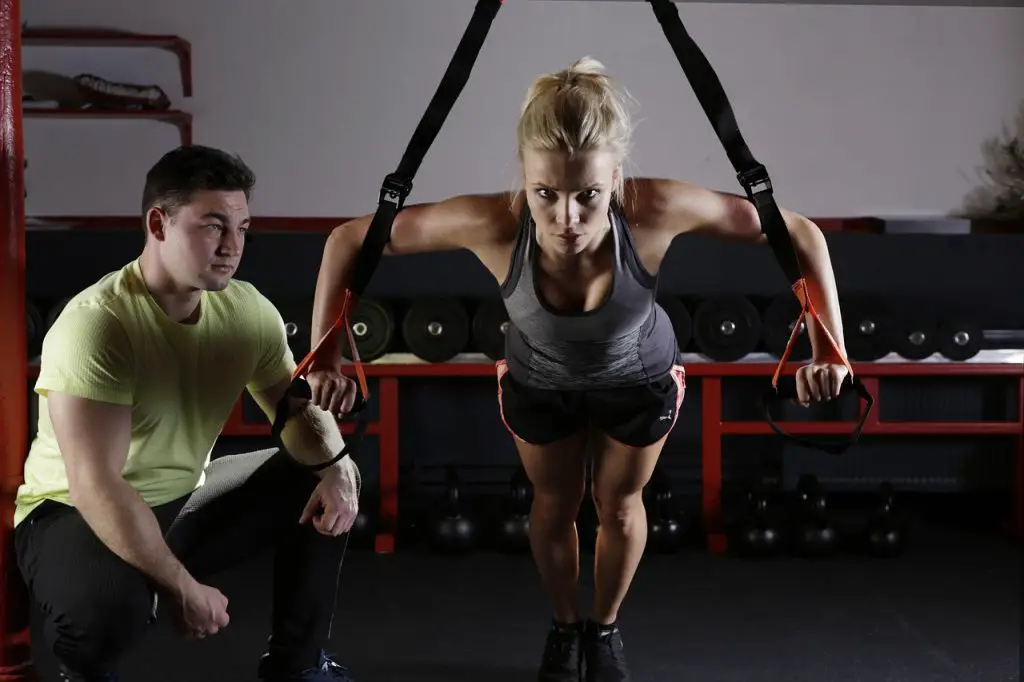
Introduction
Today is World Health Day, so it’s a perfect day to commit to feeling your absolute healthiest!
This ultimate wellness article delivers important strategies to revitalize your body and mind. Staying healthy is a lifelong commitment that requires attention to both physical and mental well-being. In today’s fast-paced world, where stress levels are high and time seems limited, maintaining wellness can feel challenging. However, research consistently shows that small, consistent changes in daily habits yield significant long-term benefits. Whether you’re navigating particularly stressful times or simply aiming for better daily habits, this comprehensive guide will help you build a sustainable healthy lifestyle.
- Prioritize Balanced Nutrition
- Stay Hydrated Throughout the Day
- Exercise Regularly for Physical and Mental Health
- Get Enough Quality Sleep
- Manage Stress with Mindfulness Techniques
- Stay Connected with Loved Ones
- Limit Alcohol and Avoid Smoking
- Schedule Regular Health Screenings
- Practice Good Hygiene Habits
- Take Breaks from Screens
- Engage in Activities You Enjoy
- Maintain a Positive Mindset
- Spend Time Outdoors
- Set Realistic Health Goals
- Listen to Your Body
- Final Thoughts: A Holistic Approach to Health
- Key Takeaways
Prioritize Balanced Nutrition
Eating a well-rounded diet is the cornerstone of good health. Nutrition directly impacts energy levels, immune function, cognitive performance, and emotional stability. Focus on incorporating whole foods like colorful fruits and vegetables, lean proteins (chicken, fish, beans), whole grains (quinoa, brown rice), and healthy fats (avocados, nuts, olive oil). These provide essential vitamins, minerals, fiber, and antioxidants that processed foods lack.
A helpful strategy is following the “plate method”: fill half your plate with vegetables, one-quarter with lean protein, and one-quarter with whole grains. For snacks, opt for Greek yogurt with berries, carrot sticks with hummus, or a handful of almonds. Meal prepping on weekends can prevent unhealthy last-minute choices during busy weekdays. Remember, healthy eating isn’t about deprivation—it’s about making nutritious foods so delicious and convenient that you prefer them.
Stay Hydrated Throughout the Day
Water is involved in nearly every bodily function, from regulating temperature to flushing toxins and cushioning joints. Even mild dehydration can cause fatigue, headaches, and difficulty concentrating. While the standard recommendation is eight 8-ounce glasses daily, individual needs vary based on activity level, climate, and body size. A good indicator is pale yellow urine—dark urine suggests you need more fluids.
Carry a reusable water bottle as a visual reminder. If plain water feels boring, infuse it with cucumber, lemon, mint, or berries for flavor. Herbal teas and sparkling water also count toward hydration. Be mindful of alcohol and caffeine, which have diuretic effects—balance each cup of coffee with an extra glass of water. Start your day with a glass of water before coffee to rehydrate after sleep.

Exercise Regularly for Physical and Mental Health
Physical activity is a miracle drug for both body and mind. The American Heart Association recommends1 at least 150 minutes of moderate exercise (like brisk walking) or 75 minutes of vigorous exercise (like running) weekly, plus muscle-strengthening activities twice a week. Exercise reduces chronic disease risk, boosts mood through endorphin release, improves sleep, and enhances cognitive function.
If gyms intimidate you, find activities you enjoy: dancing, hiking, swimming, or even gardening. Break workouts into 10-minute segments if time is limited—three short walks daily are just as effective as one long session. For office workers, set hourly reminders to stand, stretch, or take a lap around the building. Consider investing in a standing desk or under-desk pedal exerciser. The key is consistency—schedule workouts like important meetings to prioritize them.
Get Enough Quality Sleep
Sleep is when your body repairs cells, consolidates memories, and regulates hormones controlling hunger and stress. Chronic sleep deprivation (less than 7 hours nightly for adults) is linked to obesity, heart disease, depression, and weakened immunity. Create a sleep sanctuary by keeping your bedroom around 65°F, using blackout curtains, and eliminating noise with earplugs or white noise machines.
Establish a relaxing pre-bed routine: take a warm bath, read a physical book (not a screen), or practice gentle yoga. Avoid heavy meals, alcohol, and caffeine within 3 hours of bedtime, as they disrupt sleep cycles. If you wake up at night, try the “4-7-8” breathing technique (inhale 4 seconds, hold 7, exhale 8) to fall back asleep. For shift workers, maintain consistent sleep/wake times even on days off, and use melatonin supplements if recommended by your doctor.

Manage Stress with Mindfulness Techniques
Chronic stress triggers inflammation, weakens immunity, and contributes to anxiety/depression. While some stress is unavoidable, your response determines its impact. Mindfulness—paying purposeful, nonjudgmental attention to the present moment—can rewire your brain’s stress response over time. Start with just 5 minutes daily of meditation using apps like Headspace or Calm.
Alternate nostril breathing (closing one nostril while inhaling/exhaling through the other) quickly calms the nervous system. Progressive muscle relaxation (tensing/releasing muscle groups) relieves physical tension. For acute stress, the “5-4-3-2-1” grounding technique helps: identify 5 things you see, 4 you feel, 3 you hear, 2 you smell, and 1 you taste. Schedule “worry time”—15 designated minutes daily to process concerns, then consciously let them go.
Stay Connected with Loved Ones
Loneliness poses health risks equivalent to smoking 15 cigarettes daily, increasing risks for dementia, heart disease, and stroke. Meaningful social connections buffer against stress and promote longevity. Make regular “social appointments”—weekly coffee with a friend, family game nights, or joining a book club.
Deepen conversations by asking open-ended questions like “What’s bringing you joy lately?” rather than surface-level small talk. If in-person meetups are difficult, video calls or even voice messages maintain bonds. Volunteering fosters connection while boosting self-worth—help at a food bank, animal shelter, or community garden. For those struggling socially, consider therapy groups focused on social skills development.
Limit Alcohol and Avoid Smoking
Alcohol, even in moderation, affects sleep quality, liver function, and cancer risk. If you drink, follow CDC guidelines2: no more than one drink daily for women and two for men (one drink = 12 oz. beer, 5 oz. wine, or 1.5 oz. liquor). Have several alcohol-free days weekly. Alternatives like kombucha, mocktails, or flavored seltzers can replace drinking rituals.
Smoking remains the leading preventable cause of death, causing lung disease, heart attacks, and strokes. Quitting at any age improves health—within 20 minutes, blood pressure drops; after a year, heart disease risk halves. Combine nicotine replacement therapy (patches, gum) with behavioral strategies like identifying triggers (e.g., post-meal smokes → brush teeth instead). Apps like QuitGuide track progress and savings.

Schedule Regular Health Screenings
Preventive care catches issues early when they’re most treatable. Adults should have annual physicals including blood pressure checks, cholesterol tests (starting at 35 for men and 45 for women), and diabetes screening (especially if overweight). Women need Pap smears every 3 years starting at 21, mammograms at 40+, and bone density scans at 65+. Men should discuss prostate cancer screening at 50.
Don’t neglect dental cleanings (every 6 months) and eye exams (every 2 years, or annually if over 60). Keep vaccinations current—flu shots yearly, tetanus boosters every 10 years, shingles vaccine at 50+, and pneumonia vaccine at 65+. Track family medical history, as genetics influence your risk factors. Use health apps to store records and set screening reminders.
Practice Good Hygiene Habits
Basic hygiene prevents infections. Wash hands thoroughly (20 seconds with soap, scrubbing between fingers and under nails) before eating, after restroom use, and when returning home. Use hand sanitizer (60%+ alcohol) when soap isn’t available. Avoid touching your face to reduce germ transmission.
At home, disinfect high-touch surfaces weekly—doorknobs, light switches, remotes, and phones. Replace toothbrushes every 3 months or after illness. Practice food safety: separate raw/cooked foods, cook meats to proper temperatures, and refrigerate leftovers within 2 hours. When sick, wear masks to protect others and stay home until fever-free for 24 hours without medication.

Take Breaks from Screens
Digital eye strain causes headaches, blurred vision, and dry eyes from reduced blinking. Follow the 20-20-20 rule: every 20 minutes, look at something 20 feet away for 20 seconds. Adjust screen brightness to match ambient light, increase text size to avoid squinting, and use blue light filters in the evenings.
Set digital boundaries like no screens during meals or 1 hour before bed. Designate tech-free zones (bedroom, dining table). Try a “digital detox” day weekly—engage in offline hobbies like hiking, baking, or board games. For work, use productivity methods like the Pomodoro Technique (25 minutes of focused work, 5-minute screen-free break).
Engage in Activities You Enjoy
Hobbies reduce stress hormones and boost feel-good neurotransmitters like dopamine. Creative pursuits (painting, writing, playing music) engage the brain’s right hemisphere, counterbalancing logic-heavy work. Physical hobbies (gardening, dancing, sports) provide exercise benefits. Even 30 minutes daily of enjoyable activity improves well-being.
Challenge yourself by learning new skills—take a pottery class, study a language with Duolingo, or try geocaching. Volunteering your skills (teaching, building, organizing) creates purpose. Schedule hobby time like any other commitment—put it in your calendar to prioritize it. For inspiration, revisit childhood passions you may have abandoned.
Maintain a Positive Mindset
Optimism strengthens immunity and resilience. Start a gratitude journal—daily listing 3 specific things you appreciate trains your brain to spot positives. Reframe negative thoughts: instead of “I failed at this,” try “I learned what doesn’t work.” Limit exposure to negative media and toxic relationships that drain energy.
Practice self-compassion—speak to yourself as you would a dear friend. Celebrate small wins with non-food rewards like a relaxing bath or a new book. Surround yourself with visual motivators—inspirational quotes, vision boards, or photos of happy memories. Cognitive Behavioral Therapy (CBT) techniques can help rewire persistent negative thought patterns.

Spend Time Outdoors
Nature exposure lowers cortisol (stress hormone), blood pressure, and inflammation while boosting vitamin D (essential for immunity and bone health). Aim for at least 120 minutes weekly in green spaces—parks, forests, or beaches. “Forest bathing” (mindful time among trees) reduces anxiety by 15%.
Morning sunlight regulates circadian rhythms—take a 10-minute walk within an hour of waking. If urban living limits nature access, keep indoor plants or listen to nature sounds. Outdoor exercise combines benefits—try hiking, open-water swimming, or park yoga. In winter, use light therapy lamps to combat seasonal affective disorder.
Set Realistic Health Goals
Vague goals like “get healthy” often fail. Use the SMART framework: Specific (walk 30 minutes daily), Measurable (track steps with a pedometer), Achievable (start with 10 minutes if new to exercise), Relevant (aligns with your values), and Time-bound (increase duration monthly).
Focus on adding healthy habits rather than restricting—swap soda for sparkling water instead of just “drinking less soda.” Enlist an accountability partner for motivation. Expect setbacks—view them as data, not failure. For example, if you skip workouts when busy, identify barriers (late work hours?) and problem-solve (morning workouts? office stretches?).
Listen to Your Body
Your body sends signals when something’s wrong—don’t ignore persistent fatigue, pain, digestive issues, or mood changes. Distinguish between discomfort from growth (muscle soreness after new exercise) and harmful pain (sharp joint pain). Rest when needed—overtraining weakens immunity.
Track symptoms in a health journal to identify patterns (headaches after certain foods? insomnia after late caffeine?). Trust your instincts—if something feels “off” despite normal tests, seek second opinions. Advocate for yourself with healthcare providers by preparing questions in advance and bringing a companion to appointments if helpful.

Final Thoughts: A Holistic Approach to Health
True wellness integrates physical, mental, emotional, and social health. Start small—pick 2-3 tips to focus on for a month until they become habits. Stack new habits onto existing ones (meditate after brushing teeth). Remember, progress isn’t linear—self-criticism undermines motivation.
Invest in your health like retirement—small, consistent deposits yield compounding benefits over time. Your future self will thank you for the energy, resilience, and vitality you’re building today. Health isn’t a destination but a daily practice of self-respect.
Key Takeaways
Nutrition: Eat whole foods, control portions, and meal prep for consistency.
Hydration: Drink water consistently, monitor urine color, and flavor water if needed.
Exercise: Move daily in ways you enjoy, and incorporate strength training.
Sleep: Prioritize 7-9 hours, optimize sleep environment, establish routines
Stress Management: Practice mindfulness, set boundaries, and use grounding techniques.
Prevention: Schedule screenings, update vaccinations, practice hygiene
Balance: Limit screens/alcohol, nurture relationships, engage in hobbies.
By systematically implementing these evidence-based strategies, you’ll build a foundation for lifelong vitality. Remember, perfection isn’t the goal—showing up consistently is what creates lasting health transformations.
Check out our other articles for the Healthful Hub content.
Michael is a freelance writer. He devotes a great deal of time to reviewing health-related products and is passionate about writing engaging and helpful content. With over twenty years of experience, he writes to help you make well-informed decisions for the health of you and your family.